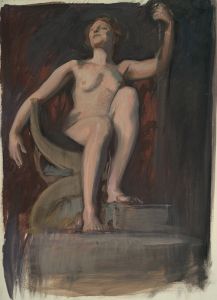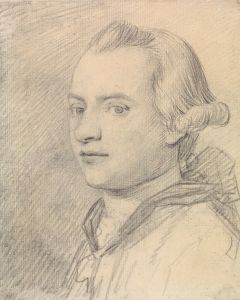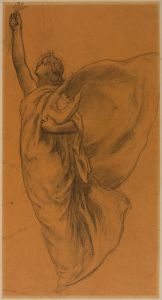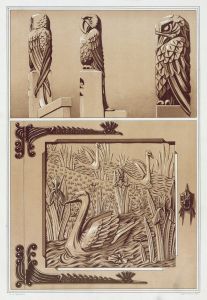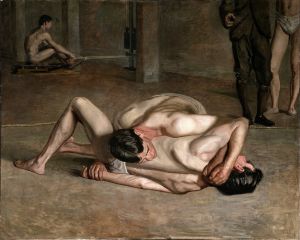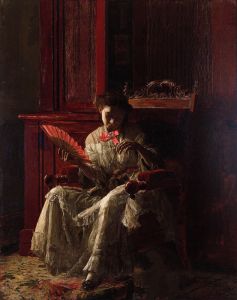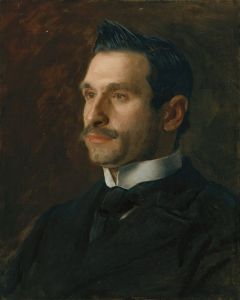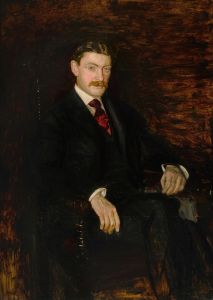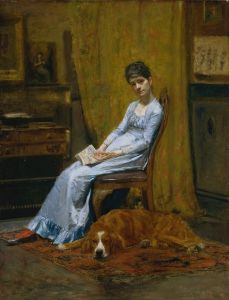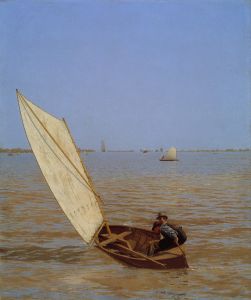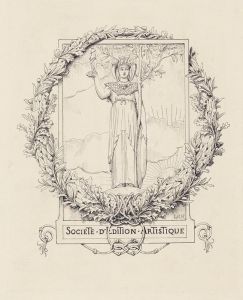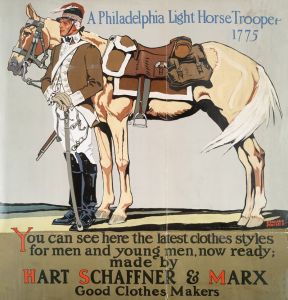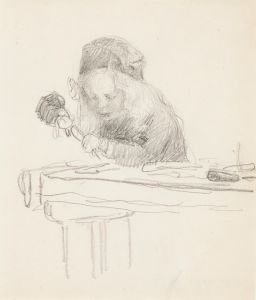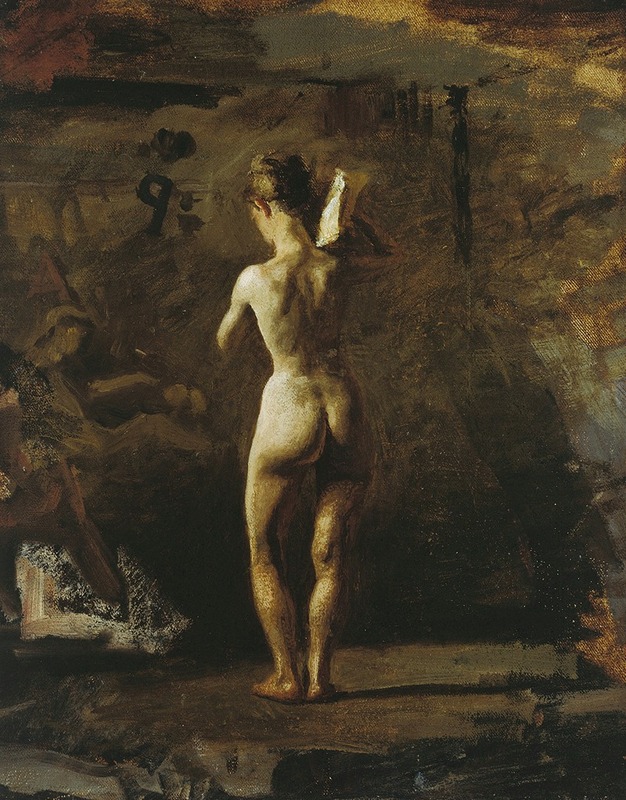
Study for ‘William Rush Carving His Allegorical Figure of the Schuylkill River’
A hand-painted replica of Thomas Eakins’s masterpiece Study for ‘William Rush Carving His Allegorical Figure of the Schuylkill River’, meticulously crafted by professional artists to capture the true essence of the original. Each piece is created with museum-quality canvas and rare mineral pigments, carefully painted by experienced artists with delicate brushstrokes and rich, layered colors to perfectly recreate the texture of the original artwork. Unlike machine-printed reproductions, this hand-painted version brings the painting to life, infused with the artist’s emotions and skill in every stroke. Whether for personal collection or home decoration, it instantly elevates the artistic atmosphere of any space.
Study for ‘William Rush Carving His Allegorical Figure of the Schuylkill River’ is a preparatory work by the American artist Thomas Eakins, created in 1876–1877. This painting is a study for Eakins's larger and more well-known work, William Rush Carving His Allegorical Figure of the Schuylkill River, which was completed in 1877. The study and the final painting both depict the 18th-century sculptor William Rush, who is often regarded as one of the first significant American sculptors.
In this study, Eakins explores the composition and elements that would later appear in the final painting. The scene portrays Rush working on a wooden sculpture of an allegorical figure representing the Schuylkill River, a waterway of great importance to Philadelphia, Eakins's hometown. The study reflects Eakins's meticulous attention to historical accuracy and his interest in depicting the artistic process. It also demonstrates his commitment to realism, a hallmark of his work, as he sought to portray the physicality and labor involved in sculpture-making.
Eakins was deeply influenced by his academic training in Europe, particularly his studies at the École des Beaux-Arts in Paris, where he developed a strong foundation in anatomy and realism. These influences are evident in the detailed rendering of the human figures and the careful attention to light and shadow in the study. The painting also reflects Eakins's interest in celebrating American art and craftsmanship, as he chose to depict a prominent figure from Philadelphia's artistic history.
The study is executed in oil on canvas and is smaller in scale compared to the final painting. It serves as an example of Eakins's working process, where he would create preparatory studies to refine his ideas before completing a larger, more polished work. The study includes elements such as the sculptor's tools, the partially completed sculpture, and figures observing Rush's work, though these details may differ slightly from the final composition.
Today, Study for ‘William Rush Carving His Allegorical Figure of the Schuylkill River’ is recognized as an important piece within Eakins's body of work, as it provides insight into his artistic methods and his dedication to portraying American subjects. The study is held in the collection of the Philadelphia Museum of Art, where it is preserved as part of the museum's extensive holdings of Eakins's works.





